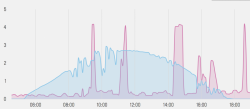As you've suggested, it's all a bit of a mine field, with some very dodgy companies out there. We've just installed a 6kw system and hunted around the local installers, and got recommendations (and the opposite) from all of our neighbours with systems.
Cheaper is just that. Even down to very poor installs in many cases. The power companies that are getting in on the act, aren't much better, using the cheapest installers and components they can find.
We used a local who was recommended. He was far from the cheapest...actually the most expensive. On the other hand the install was quick, extremely tidy, and basically painless. I added appreciably to the cost because I wanted to use micro inverters, which upped the cost of the job by about 25%.
You will almost certainly be limited to 5kw of power input..per phase. If you happen to have 3 phase that means 15kw..
We've just had the first bill since the install, and basically it has nuked the power bill. From the date of the install the overall cost has been slightly positive.
I'm currently thinking of upping the number of installed panels, to take it to about 8kw. My aim will be to maximise winter production...filling out the power production graph. It's probably marginally cost effective, but I like the idea of not getting a power bill..or at least a minimal one.
As for the 60 plus cent feed in tariffs that some get...they aren't being paid for by the government, but rather by every other power user.























